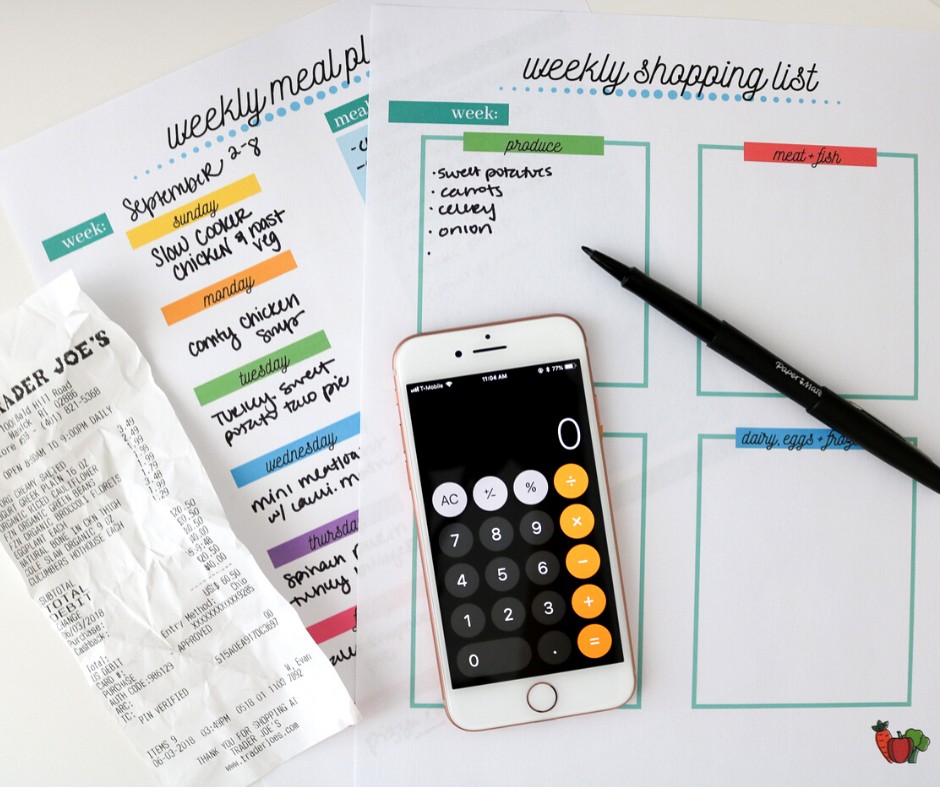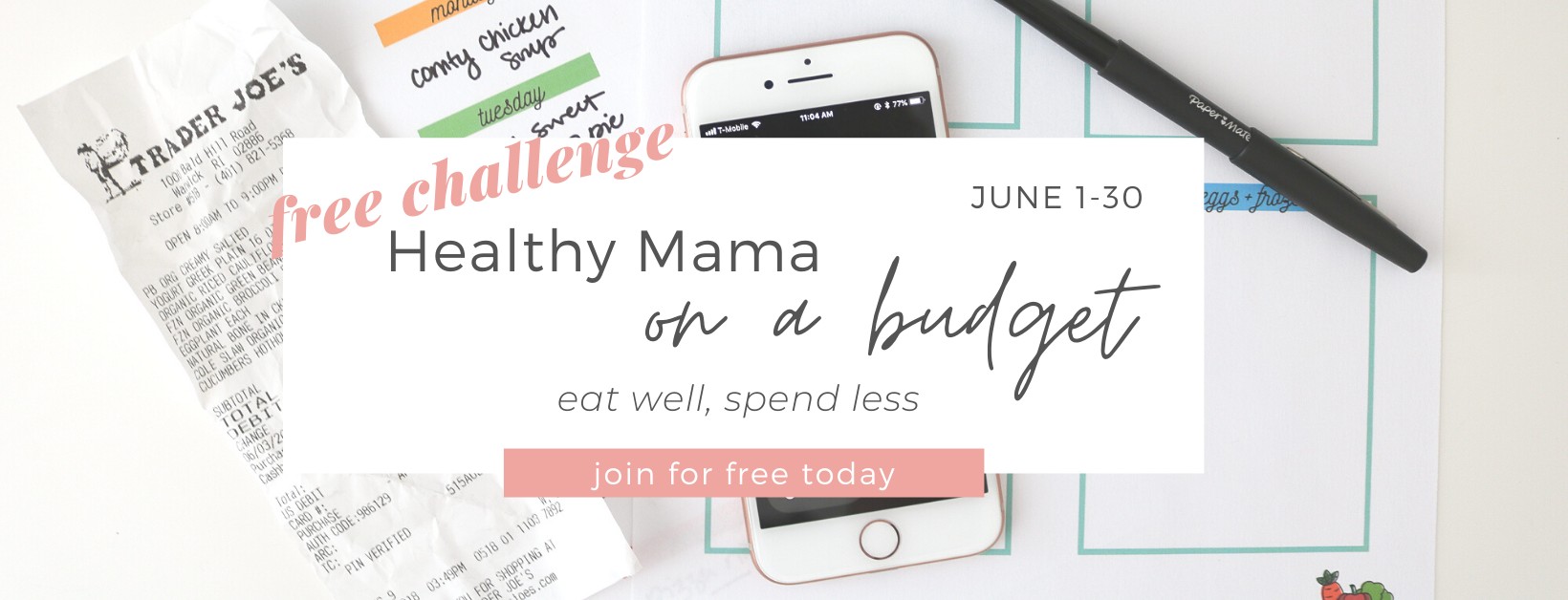Determining how much to spend on food per month involves evaluating your income, family size, and eating habits, FOODS.EDU.VN offers insights and tools to help you create a personalized and effective budget. By understanding your spending habits, considering USDA guidelines, and factoring in dining out, you can create a balanced budget that supports your financial and nutritional goals. Discover valuable recipes, cooking techniques, and culinary knowledge at FOODS.EDU.VN.
1. Understanding Your Food Spending Habits
1.1 Why Track Your Spending?
Tracking your current spending habits is the first and most crucial step in determining an appropriate monthly food budget. By meticulously saving receipts and categorizing your purchases, you gain a clear understanding of where your money is going. This process reveals areas where you might be overspending and identifies potential opportunities for savings.
Benefits of Tracking:
- Increased Awareness: You become more conscious of your spending patterns.
- Identifying Trends: Recognize peak spending times or specific categories where costs are high.
- Budget Alignment: Determine if your current spending aligns with your financial goals.
For instance, if you notice that a significant portion of your budget goes towards eating out, you might consider cooking more meals at home. According to a study by the Bureau of Labor Statistics, households spend an average of $3,459 per year on food away from home. Reducing this expense can free up a substantial amount for groceries and other needs.
1.2 How Long Should You Track?
To get an accurate picture of your spending, it’s recommended to track your expenses for at least two weeks, but ideally for one to two months. This longer period accounts for variations in your eating habits and shopping patterns. For example, you might spend more during holidays or when hosting gatherings.
Tracking Timeline:
- Minimum: Two weeks to capture basic spending habits.
- Recommended: One to two months to account for variations.
- Ideal: Ongoing tracking to maintain budget awareness.
1.3 Tools for Tracking Expenses
There are numerous tools available to help you track your expenses effectively. These range from simple pen-and-paper methods to sophisticated budgeting apps.
Tracking Methods:
- Manual Tracking: Using a notebook or spreadsheet to record expenses.
- Budgeting Apps: Apps like Mint, YNAB (You Need A Budget), and Personal Capital offer automated tracking and budgeting features.
- Banking Tools: Many banks provide tools to categorize and track your spending directly through your account statements.
Choosing the right tool depends on your preferences and how much detail you want to capture. Budgeting apps can provide detailed reports and insights, while manual tracking offers a more hands-on approach.
2. Establishing a Baseline Budget
2.1 Calculating Your Current Spending
Once you’ve tracked your spending for a sufficient period, the next step is to calculate your total monthly food expenses. Add up all the receipts and categorize them to understand where your money is going.
Steps to Calculate Spending:
- Gather Receipts: Collect all grocery and dining-out receipts.
- Categorize Expenses: Divide expenses into categories such as groceries, dining out, takeout, and snacks.
- Total Each Category: Calculate the total amount spent in each category.
- Calculate Monthly Total: Sum up all categories to determine your total monthly food spending.
2.2 Determining Fixed and Variable Expenses
Understanding the difference between fixed and variable expenses is essential for creating a flexible and realistic budget. Fixed expenses are consistent and predictable, while variable expenses can fluctuate.
Types of Expenses:
- Fixed Expenses: Rent/mortgage, utilities, insurance.
- Variable Expenses: Groceries, dining out, entertainment.
Example:
If your monthly income is $5,000 and your fixed expenses total $3,000, you have $2,000 remaining for variable expenses, including food.
2.3 Aligning Spending with Your Goals
Now, evaluate whether your current spending aligns with your financial and nutritional goals. Are you spending too much on dining out and not enough on healthy, home-cooked meals? Do you need to cut back to meet other financial obligations?
Questions to Consider:
- Is your current spending sustainable?
- Does it support your health and nutritional needs?
- Are there areas where you can reduce spending?
- Does your spending align with your long-term financial goals?
3. Considering Income and the 10-15% Rule
3.1 The 10-15% Guideline
A common guideline suggested by financial experts like Dave Ramsey is to allocate 10-15% of your income to food. However, this is a general recommendation and may not be suitable for everyone.
Factors to Consider:
- Income level
- Family size
- Dietary needs and preferences
- Geographic location
For example, a single person with a high income may comfortably spend 15% on food, while a large family with a lower income may need to aim for a lower percentage.
3.2 Applying the Guideline to Your Situation
To determine if the 10-15% guideline is appropriate for you, calculate what that percentage looks like based on your monthly income.
Calculation:
- Calculate 10% of your monthly income.
- Calculate 15% of your monthly income.
- Determine if this range is realistic for your family size and needs.
For instance, if your monthly income is $4,000, 10-15% would be $400-$600. Consider whether this amount is sufficient to cover your grocery needs and adjust accordingly.
3.3 Real-World Scenarios
Scenario 1:
- Family: Single individual
- Income: $3,000 per month
- 10-15%: $300-$450
- Considerations: This individual may be able to comfortably spend within this range, focusing on quality ingredients and occasional dining out.
Scenario 2:
- Family: Family of four
- Income: $4,000 per month
- 10-15%: $400-$600
- Considerations: This family may need to prioritize affordable meal options and minimize dining out to stay within budget.
4. Understanding USDA Guidelines
4.1 Overview of USDA Food Plans
The United States Department of Agriculture (USDA) provides food plans at four different cost levels: thrifty, low-cost, moderate-cost, and liberal. These plans estimate the cost of a nutritious diet for different family sizes and ages.
USDA Food Plan Levels:
- Thrifty: Minimum cost for a nutritious diet.
- Low-Cost: More flexibility and variety than the thrifty plan.
- Moderate-Cost: Allows for more choices and higher-quality ingredients.
- Liberal: Highest cost, providing the most variety and convenience.
4.2 Detailed Breakdown of Each Plan
As of February 2020, the USDA guidelines for a family of four (two adults and two children) are:
| Plan Level | Ages 2-5 | Ages 6-11 |
|---|---|---|
| Thrifty | $569.60 | $653.80 |
| Low-Cost | $727.60 | $857.60 |
| Moderate-Cost | $897.40 | $1071.40 |
| Liberal | $1108.20 | $1297.60 |




These figures are based on the assumption that all meals are eaten at home and are prepared according to USDA nutritional guidelines.
4.3 How to Use USDA Guidelines
- Determine Your Family Type: Identify the age ranges of your family members.
- Select a Cost Level: Choose a plan that aligns with your income and spending habits.
- Adjust for Dining Out: Add an estimate for dining out or takeout expenses.
- Compare to Current Spending: See how your current spending compares to the USDA guidelines.
- Make Adjustments: Adjust your budget as needed to align with the guidelines and your financial goals.
5. Factoring in Dining Out and Takeout
5.1 Assessing Your Dining Out Habits
Dining out and ordering takeout can significantly impact your monthly food budget. Evaluate how often you eat out and how much you spend each time.
Questions to Ask Yourself:
- How many times per week do you eat out?
- What is the average cost per meal when dining out?
- Are there alternatives to dining out, such as cooking at home or meal prepping?
5.2 Separating Dining Out Expenses
Decide whether to include dining out and takeout expenses in your overall food budget or to allocate a separate fund for these activities.
Approaches:
- Combined Budget: Include dining out expenses in your total food budget.
- Separate Fund: Create a specific budget for dining out, separate from your grocery budget.
The choice depends on your personal preferences and how you want to manage your spending. A separate fund can help you track and control dining out expenses more effectively.
5.3 Tips for Reducing Dining Out Costs
- Cook More Meals at Home: Plan your meals and cook at home more often.
- Meal Prep: Prepare meals in advance to avoid last-minute takeout orders.
- Limit Dining Out: Reduce the frequency of dining out to once a week or less.
- Choose Affordable Options: When dining out, select restaurants with lower prices or take advantage of specials and discounts.
According to a study by Mint.com, cooking at home can save you an average of $3,000 per year compared to eating out regularly.
6. Personalizing Your Budget
6.1 Considering Your Dietary Needs and Preferences
Your dietary needs and preferences play a significant role in determining your food budget. Whether you follow a specific diet, such as vegetarian, vegan, gluten-free, or keto, your food choices will impact your spending.
Factors to Consider:
- Dietary Restrictions: Allergies, intolerances, or medical conditions.
- Ethical Choices: Organic, local, or sustainable foods.
- Taste Preferences: Foods you enjoy and are likely to eat.
6.2 Adjusting for Specific Diets
- Vegetarian/Vegan: May require higher spending on plant-based protein sources like tofu, lentils, and nuts.
- Gluten-Free: Gluten-free products often cost more than conventional alternatives.
- Keto: Focuses on high-fat, moderate-protein, and low-carb foods, which may include higher-cost items like avocados and nuts.
Plan your meals around affordable and accessible options that align with your dietary needs. FOODS.EDU.VN offers a variety of recipes and cooking techniques to help you prepare delicious and cost-effective meals tailored to your dietary preferences.
6.3 Incorporating Personal Values
Your personal values, such as supporting local farmers, buying organic produce, or choosing sustainable seafood, can also influence your food budget. These choices often come with a higher price tag but align with your commitment to ethical and environmental considerations.
Strategies for Balancing Values and Budget:
- Prioritize Purchases: Focus on buying organic or local for items that are most important to you.
- Buy in Season: Seasonal produce is often more affordable and flavorful.
- Shop at Farmers Markets: Farmers markets can offer competitive prices and support local agriculture.
- Reduce Food Waste: Minimize waste by planning meals and using leftovers creatively.
7. Tips for Saving Money on Groceries
7.1 Meal Planning
Meal planning is one of the most effective ways to save money on groceries. By planning your meals for the week, you can create a targeted shopping list and avoid impulse purchases.
Steps for Meal Planning:
- Check Your Pantry: Take inventory of what you already have on hand.
- Plan Your Meals: Choose recipes for the week, considering your dietary needs and preferences.
- Create a Shopping List: Write down all the ingredients you need, based on your meal plan.
- Stick to Your List: Avoid buying items that are not on your list.
7.2 Smart Shopping Strategies
- Shop with a List: Always shop with a list to avoid impulse buys.
- Compare Prices: Check prices at different stores to find the best deals.
- Buy in Bulk: Purchase non-perishable items in bulk to save money.
- Use Coupons: Clip coupons from newspapers, websites, and apps.
- Shop in Season: Seasonal produce is often cheaper and tastier.
- Avoid Processed Foods: Processed foods are typically more expensive and less nutritious.
7.3 Reducing Food Waste
Food waste is a significant drain on your budget. According to the Natural Resources Defense Council, Americans waste up to 40% of their food. Reducing food waste can save you money and help the environment.
Tips for Reducing Food Waste:
- Plan Your Meals: Plan your meals to use ingredients efficiently.
- Store Food Properly: Store food correctly to extend its shelf life.
- Use Leftovers: Get creative with leftovers and incorporate them into new meals.
- Compost Food Scraps: Compost food scraps to reduce waste and enrich your garden.
8. Common Pitfalls to Avoid
8.1 Impulse Buying
Impulse buying can quickly derail your food budget. Avoid shopping when you’re hungry or stressed, as this can lead to unplanned purchases.
Strategies to Avoid Impulse Buying:
- Shop with a list and stick to it.
- Avoid shopping when hungry or stressed.
- Be mindful of marketing tactics that encourage impulse buys.
8.2 Not Tracking Expenses
Failing to track your expenses can make it difficult to stay within your budget. Make tracking a habit and review your spending regularly.
Tips for Consistent Tracking:
- Set a reminder to track your expenses daily or weekly.
- Use a budgeting app to automate the tracking process.
- Review your spending at the end of each month and make adjustments as needed.
8.3 Ignoring Sales and Discounts
Ignoring sales and discounts can cause you to miss out on significant savings. Take the time to check for deals and use coupons.
Ways to Take Advantage of Sales:
- Check weekly flyers for sales and discounts.
- Use coupon websites and apps.
- Sign up for store loyalty programs to receive exclusive deals.
9. Adapting Your Budget Over Time
9.1 The Importance of Flexibility
Your food budget should be a living document that adapts to changes in your life. Factors such as changes in income, family size, or dietary needs may require you to adjust your budget.
Life Changes That May Impact Your Budget:
- Changes in income
- Changes in family size
- New dietary needs or preferences
- Moving to a new location
9.2 Reviewing and Adjusting Your Budget
Regularly review your budget to ensure that it still meets your needs. Make adjustments as necessary to stay on track.
Steps for Reviewing and Adjusting:
- Review your spending at the end of each month.
- Compare your spending to your budget and identify any discrepancies.
- Adjust your budget as needed to reflect changes in your life.
- Repeat this process regularly to stay on track.
9.3 Seeking Professional Advice
If you’re struggling to create or stick to a budget, consider seeking advice from a financial advisor or budgeting coach. They can provide personalized guidance and support.
Benefits of Professional Advice:
- Personalized budget recommendations
- Expert guidance on financial planning
- Support and accountability
10. Utilizing FOODS.EDU.VN for Culinary Inspiration
10.1 Exploring Diverse Recipes
FOODS.EDU.VN offers a wealth of recipes catering to various tastes, dietary needs, and skill levels. Whether you’re seeking budget-friendly meals, gourmet creations, or recipes tailored to specific diets, you’ll find inspiration to elevate your home cooking.
10.2 Mastering Cooking Techniques
Beyond recipes, FOODS.EDU.VN provides in-depth guides on essential cooking techniques. From basic knife skills to advanced culinary methods, these resources empower you to improve your cooking abilities and prepare restaurant-quality meals at home.
10.3 Staying Updated on Culinary Trends
FOODS.EDU.VN keeps you informed about the latest culinary trends, ingredient innovations, and dietary research. By staying up-to-date, you can incorporate new ideas into your meal planning and make informed choices about the foods you consume.
| Topic | Description | Benefits |
|---|---|---|
| Culinary Trends | Stay informed about the latest food trends and innovations. | Discover new ingredients, recipes, and cooking techniques. |
| Dietary Research | Understand the latest research on nutrition and health. | Make informed choices about your diet and health. |
| Cooking Techniques | Master essential cooking techniques. | Improve your cooking skills and prepare restaurant-quality meals. |
Remember, FOODS.EDU.VN is here to support you in your culinary journey. For more in-depth knowledge, visit us at 1946 Campus Dr, Hyde Park, NY 12538, United States. Contact us via Whatsapp at +1 845-452-9600 or visit our website at FOODS.EDU.VN.
FAQ: Managing Your Monthly Food Expenses
1. How can I accurately determine how much I currently spend on food each month?
Track all your food-related expenses, including groceries, dining out, and takeout, for at least one month using a budgeting app, spreadsheet, or notebook to get an accurate picture of your spending habits.
2. What percentage of my income should I allocate to food expenses?
A common guideline suggests allocating 10-15% of your income to food, but this can vary based on your income, family size, and dietary needs.
3. How do USDA food plans help in budgeting for food?
USDA food plans provide estimates for the cost of a nutritious diet at different cost levels, helping you compare your current spending and adjust your budget accordingly.
4. Should I include dining out and takeout in my monthly food budget?
Decide whether to include dining out and takeout expenses in your overall food budget or create a separate fund for these activities based on your personal preferences.
5. How can I save money on groceries each month?
Plan your meals, shop with a list, compare prices, buy in bulk, use coupons, shop in season, and reduce food waste to save money on groceries.
6. What are some common budgeting pitfalls to avoid?
Avoid impulse buying, not tracking expenses, and ignoring sales and discounts to stay within your budget.
7. How often should I review and adjust my food budget?
Review your food budget regularly, ideally at the end of each month, and make adjustments as needed to reflect changes in your life.
8. How can dietary restrictions or preferences impact my food budget?
Specific diets, such as vegetarian, vegan, gluten-free, or keto, may require adjustments to your budget based on the cost of specialized ingredients.
9. How does FOODS.EDU.VN assist with meal planning and budgeting?
FOODS.EDU.VN offers diverse recipes, cooking techniques, and culinary trend updates to help you plan meals, save money, and make informed choices about your food.
10. Where can I find more in-depth knowledge and resources for culinary inspiration?
Visit FOODS.EDU.VN at 1946 Campus Dr, Hyde Park, NY 12538, United States, contact us via Whatsapp at +1 845-452-9600, or visit our website for more culinary inspiration.
Ready to take control of your food budget and discover a world of culinary possibilities? Visit foods.edu.vn today and explore our extensive collection of recipes, cooking techniques, and expert advice. Let us help you create delicious, budget-friendly meals that nourish your body and delight your taste buds.
